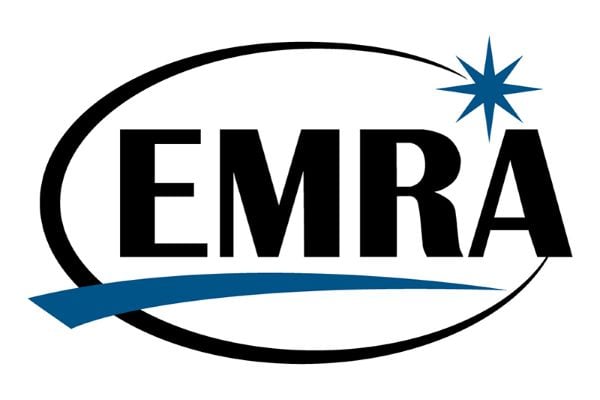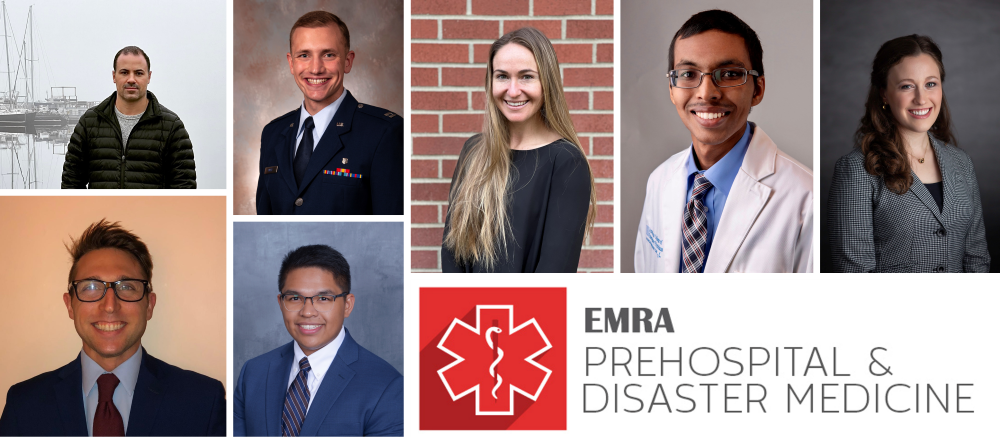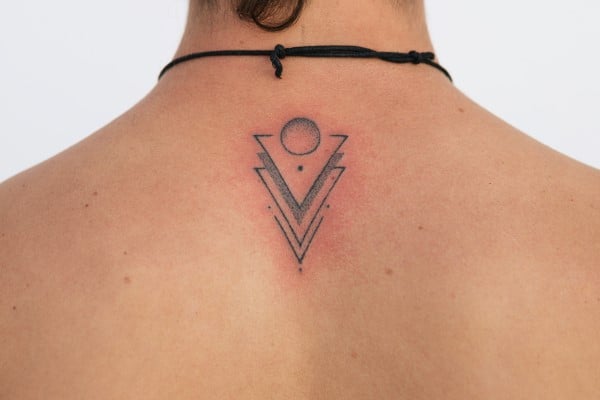Pathways in Palliative Care via Emergency Medicine
Peter Mattson, MSIV, Warren Alpert Medical School at Brown University
EMRA MSC Northeast Coordinator, 2019-20
When you reflect on your experiences in the emergency department, which patient encounters stand out as the most memorable and the most challenging? Many of these encounters will likely touch on palliative care in one form or another. Palliative care is crucial for directing a patient’s goals of care, symptom management, and planning for their future. If given enough time and effort, these often-difficult conversations can illuminate a patient or family member’s values and goals and can inform physicians as to how best to give support that meets their objectives. An increasing number of emergency physicians are turning to palliative care fellowships to gain skills in this field and incorporate it into their academic careers. We asked some EM physicians who specialize in palliative care to share how they shaped their careers and how their careers shaped them.
How have you incorporated your palliative care training into your EM career?
Dr. Karen Jubanyik, National Chair of the Society for Academic Emergency Medicine’s Palliative Care Interest Group and Associate Professor at Yale University: At this point, clinically, I work full time in the ED. That is how I feel I can best make an impact in the world of palliative care. Some of the patients I see in the ED are experiencing a real change in their condition and are truly at the end of life. I can have conversations with patients and their families to examine their goals for whatever time they have left and try to incorporate those into recommendations, which is a particularly hard process for families who have not thought a lot about the topic or who are caught off guard and unprepared. There are other situations where the patient is still rather healthy and completely decisional, and I see the ED visit as a time to start the process of thinking about having difficult conversations with their loved ones, so they do not end up in the first situation, where their bereft families are left to make difficult decisions. A significant percentage of our patients should be starting to think about what they value and prioritize in life and communicating these thoughts and feelings to the significant people in their lives. Though it seems like the ED is chaotic, an EM physician is often the perfect person to start having these conversations. If their regular oncologist or physician starts having these conversations in the context of a long relationship, patients are going to wonder, “why now? Is there something the doctor isn’t telling me?” Plus, we know that the closer the doctor feels emotionally to the patient, the poorer their ability to accurately prognosticate and to want to have difficult conversations. Our ability to be a bit more distant from the situation, as well as our ability to develop quick rapport, makes most EM physicians quite good at starting the conversation.
Dr. Bonnie Marr, Senior Clinical Associate at Johns Hopkins University: I am practicing full-time at Johns Hopkins Hospital as a palliative medicine inpatient consultant. I have been fortunate that my program is fostering an active collaboration with the Emergency Department to explore how palliative medicine can be of support for patients presenting with serious illness to the ED. In addition, since fellowship, I have worked at academic institutions with a large number of ICUs, which allows me to apply both my emergency medicine and palliative training to a variety of consults.
Dr. Sangeeta Lamda, Professor at Rutgers New Jersey Medical School: Palliative care is part of overall good clinical care, so it is part and parcel of all that I do in EM.
Dr. Leah McDonald, Palliative Care Fellow at Brown University: My goal is to help empower EM physicians to practice evidence-based, quality primary palliative care in the ED. I am currently a hospice and palliative medicine fellow, learning the skills of palliative care. Practicing palliative care with the lens of an EM physician, I want to create innovative training methods and skills-based approaches to palliative medicine in the ED. For example, including prognosis in medical-decision making using prognostication tools, implementing initial goals-of-care conversations that can be continued by inpatient teams and primary care physicians, and discussing worst- and best-case scenarios when presenting medical treatment options.
What is the breakdown of your current practice setting?
KJ: Clinically, generally I still do 100% emergency medicine, but will spend some of my upcoming sabbatical time doing clinical work in the palliative care setting, to keep up my skills and learn new ones. In addition, I do spend time with our palliative care team in research conferences, grand rounds, as well as a participant on their teaching teams for medical students, residents, fellows, nurses, and other physicians.
BM: As referenced above, I am full-time within the Palliative Medicine Section; however, part of my focus is working towards exploring optimizing support for patients presenting to the ED.
SL: 20 percent EM; 30 percent education; 50 percent administrative work.
LM: I am currently in a full-time clinical Hospice and Palliative Medicine fellowship while completing per diem shifts in the ED. I plan to practice with split time in both fields once I finish my fellowship.
How does your emergency medicine training impact your role as a palliative care physician?
KJ: I trained in IM prior to training in EM, so it is my training in IM that was formative in my life-long interest in palliative care. My first exposure to the IM wards and ICUs as a medicine resident had me questioning why we were providing so much aggressive care that most people would not choose for themselves but that families felt obligated to choose for their loved ones. At the same time, providing care in a needy community raised additional questions about rational spending; it seemed particularly wasteful to provide expensive, burdensome care that often did not affect patient-centered outcomes while denying lots of needed, potentially beneficial medical care to others.
BM: My emergency medicine training has been a wonderful foundation for my work in palliative medicine. In EM, you are trained to evaluate and manage patients presenting with a huge breadth of disease-states and potentially with complex psychosocial issues requiring support. I have found this has helped me approach each case with a solid understanding of the medicine involved and an appreciation for the layers of support that patients with serious illness may require. I feel fortunate every day for my EM training.
SL: I feel as EM physicians, we are very strong patient advocates and are good with aggressively managing symptoms. Both these aspects apply to and are very important for palliative care.
LM: The biggest impact I have seen is having the eyes of someone who is used to seeing people prior to them receiving their inpatient diagnosis. EM physicians determine a patient's whole inpatient trajectory for medical care. We look at the patient in front of us and can tell “sick vs. not sick,” which is an invaluable skill. When medical teams and patients or families are looking to minor improvements lab values or the impact of a single medication adjustment, I feel that my training in EM allows me to see the big picture a bit easier. Now I am learning how to best convey that “big picture” to patients and families to help them make the most informed decisions for their medical care.
Do you believe palliative care could be better incorporated into medical school/residency training? How so?
BM: I think that institutions across the United States are all working towards optimizing training in palliative care and this has been exciting to observe and be a part of. Given the ongoing evolution of its incorporation into these curriculums, it likely requires ongoing assessment of what training learners are provided with starting in medical school to better assess needs at every level after that from residency to fellowship. As these general education efforts related to palliative care continue to grow, I suspect that the residency and fellowship needs will likely become more focused.
SL: Yes, medical schools variably address palliative care. Most do provide delivery of bad news curricula, but depth is needed. With demands on curricular time in medical school and residency training, the “softer skills” of effective communication are often pushed to the back.
LM: It has been well documented that residents believe end-of-life conversations and management is important, but that most feel underprepared to practice this aspect of medicine. I think the incorporation of time on palliative care consult services should be more encouraged, such as including it as part of internal medicine blocks. Right now, you need to seek out electives, but this is going to be part of your practice every day so it should be more integrative. Many people view palliative care as for imminently dying patients. We need to open up the view on palliative medicine early in medical school to the way palliative physicians approach it, and they will ideally use those primary palliative skills earlier in their careers. These conversations are hard - I am not understating that. But feeling empowered to have these discussions using a clear skills-based framework makes it so much more rewarding when talking to your patients. That requires practice, practice, practice - just like everything else in medicine.
Do you have any words of wisdom for those pursuing a career in EM and palliative care?
KJ: The EM palliative care community is a small one. We all know each other and many of us have worked together in research and educational collaborations. Find some mentors who are part of this community and this will open doors around the country. If a resident is interested in fellowship training, find out which palliative care fellowships have already trained EM residency graduates - these will be much more likely to accept another and will likely be better prepared to give the EM residency graduate the best training. And, if possible, consider a place that will let you do at least a couple shifts in the ED each month, at least as moonlighting. I think it would be tough to be a new residency graduate and then not work clinically in the ED for an entire year.
BM: Go for it! There is a growing and supportive group of physicians who have training in both with completion of a fellowship after residency and the certification is available through ABEM. Mentorship and collaboration within this group has been very supportive for me and making connections can be a great way to explore what palliative medicine has to offer after EM training.
SL: As with any path you take, make sure you do it for the right reasons. A passion and deep interest in the field will help provide meaning and happiness.
LM: Think about your motivations for pursuing both fields. It will be useful in guiding what you learn in a fellowship if that is the path you choose. I think EM physicians are by nature flexible, so I would maintain that nature through your training. You will be able to forge a career that fits your goals in this developing field of EM palliative medicine, but without having a good grasp on what you are hoping to achieve, that pathway may not be as obvious.
What is the most satisfying aspect of the path you have chosen?
KJ: As the field of hospice and palliative medicine has grown, I have enjoyed the additional intellectual challenge of learning new knowledge, clinical skills, and communication strategies. Every new patient encounter is different from every other. Communicating with patients and families about serious illness and end of life issues is always a challenge and a chance to learn how to do better. And though I still love going to work every day in the ED and see myself doing this for the foreseeable future, if I ever get to the point where I do not love my job or if I could no longer do the grueling nature of work in the ED, I have an intellectually challenging potential “exit strategy” - having options is always freeing.
BM: It is hard to name one! For me, having the chance to sit down with patients and their families to insure they have all the information and support needed to make informed decisions about their healthcare with their providers as well as to fully evaluate what quality of life means to them and insure these wishes are incorporated into their treatment plan or transition to hospice is very meaningful. Palliative medicine also focuses on reducing suffering through management of symptoms and my EM training has assisted me in being sensitive to changes indicating evolution of the underlying disease process. Overall, the path has inspired daily gratitude for the privilege of being involved in the care of patients at such critical moments in their lives.
SL: I mainly engage in palliative care-related education for both residents and students. I do not practice in a palliative care team or hospice setting. Skills that palliative care training builds apply to all aspects of clinical work, allowing me to be a better listener and communicator, especially in those difficult end of life journeys.
LM: The continuity of care I gain while seeing my palliative patients adds as an aspect of patient care missing from my EM practice. Even seeing a patient for multiple encounters while in the hospital allows us to develop relationships and build trust. Using conversation tools that help build trust, as well as learning from conversations “gone wrong” when talking about heavy topics like life-limiting illness, is allowing me to bring even more empathy and compassion to care for critically ill and emotionally overwhelmed patients in the ED.
Related Content

Aug 25, 2017
Your Home
The Emergency Medicine Residents' Association EMRA is the voice of emergency medicine physicians-in-training and the future of our specialty and the largest and oldest independent resident organization in the world. EMRA was founded in 1974 and today has a membership over 18,000 residents, medical students, and alumni.






